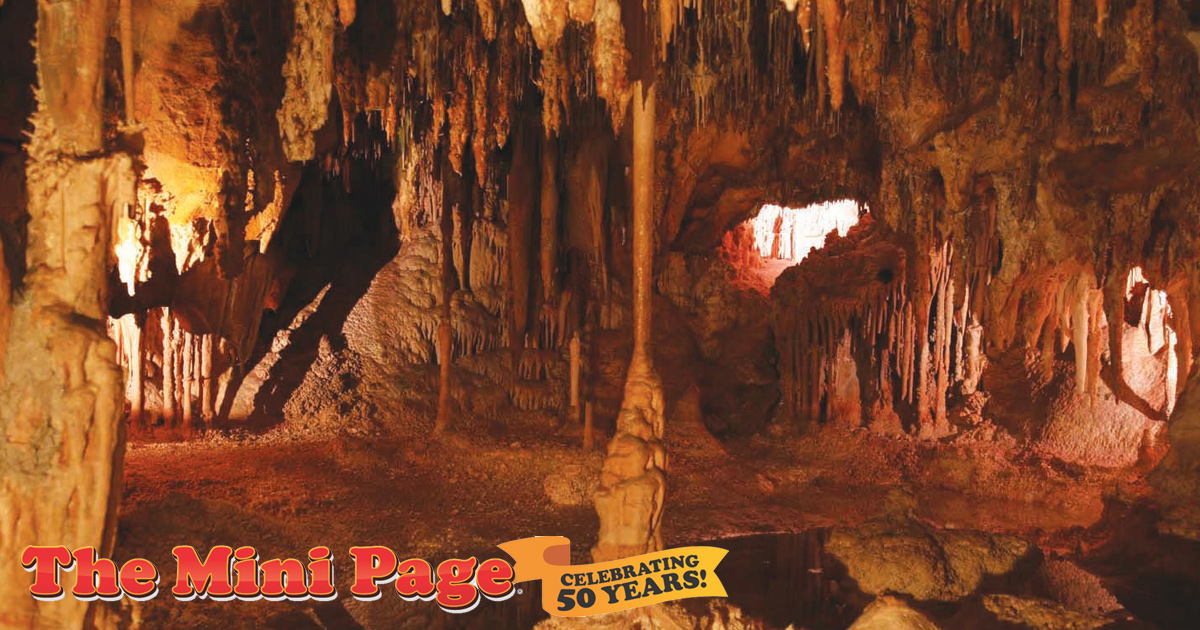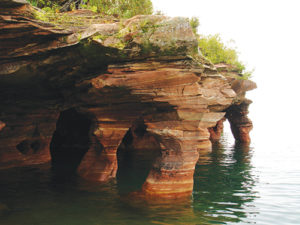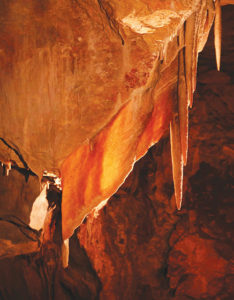
AMP | Kids is proud to announce an ongoing partnership with The Mini Page, now in its 50th year of providing engaging and fun learning opportunities to young readers across the country. This feature was originally syndicated in newspapers the week of August 24 – August 30, 2019. It is distributed digitally here with permission from Andrews McMeel Syndication. Enjoy and share with the young learners in your life!
Did you visit a cave this summer? They may seem scary, but we can think of caves as Earth’s museums. Much of what we know about the first days of people on Earth we learned from cave discoveries. Cave paintings were man’s first artwork. Humans wrote some of their first words on cave walls long before paper was invented. Caves also reveal to us the layers of the Earth, the materials found in them, and the forces that make them. More than 40,000 caves have been found in the United States. Some experts think we have discovered only about one-third of all the caves that exist in the world.
How are caves made?

Sea caves at Apostle Island National Seashore.
Caves can be created in several different ways by powerful forces of nature.
- Sea caves are created by waves pounding against weak rocks along rocky shores.
- Solutional caves are created when water mixed with a weak acid dissolves away rocks such as limestone. They are called “solutional” because they are formed in rocks that can be dissolved by water. About one-fifth of the land in the United States has the type of landscape, called karst, where this kind of cave can form.
- Lava caves are created by the cooling of lava. A crust forms as lava cools. When the molten lava drains away, it leaves behind long tubes.
Other types of caves can be created by wind, earthquakes and collapsed rocks.
Underground wonders
Over hundreds of years, tiny crystals build up one on top of another to make a speleothem (SPEE-lee-eh-them), or cave deposit.
On average, it takes 100 years for one cubic inch of a cave deposit to form. The most common examples of speleothems are:
 Stalactites (stuh-LAK-tyts): Formations that hang from the ceiling. They look like icicles and have sharp points.
Stalactites (stuh-LAK-tyts): Formations that hang from the ceiling. They look like icicles and have sharp points.- Stalagmites (stuh-LAG-myts): Formations that rise from the floor. They usually are formed by water dripping from stalactites. They have rounded tops.
- When a stalactite grows down and meets a stalagmite growing up, the formation is called a column.
- A drapery is a thin sheet that hangs in folds like curtains. The one shown here is in Lehman Caves at Great Basin National Park.
Living in a cave
Conditions in caves are difficult. To survive, cave animals must adapt to the special conditions.
Cave animals must be good at finding food. For example, cave fish are blind, but some have receptors in their heads that detect movement in the water. If food falls into an underground river, the fish can sense the movement, swim over and grab a snack.
Cave critters
Cave dwellers are animals whose bodies have adapted over time so they can spend all of their lives in caves. They live in the part of caves called the dark zone. Most are blind and could not survive above ground. Cave fish, cave shrimp, millipedes and cave salamanders are a few examples.
Some other species of mammals, insects, birds and amphibians may visit caves or live in them part time. These include raccoons, skunks, frogs, bats, crickets and earthworms.
Resources
On the Web:
At the library:
- Caves by Ellen Labrecque
Teachers: For standards-based activities to accompany this feature, visit Andrews McMeel Syndication. And follow The Mini Page on Facebook!
